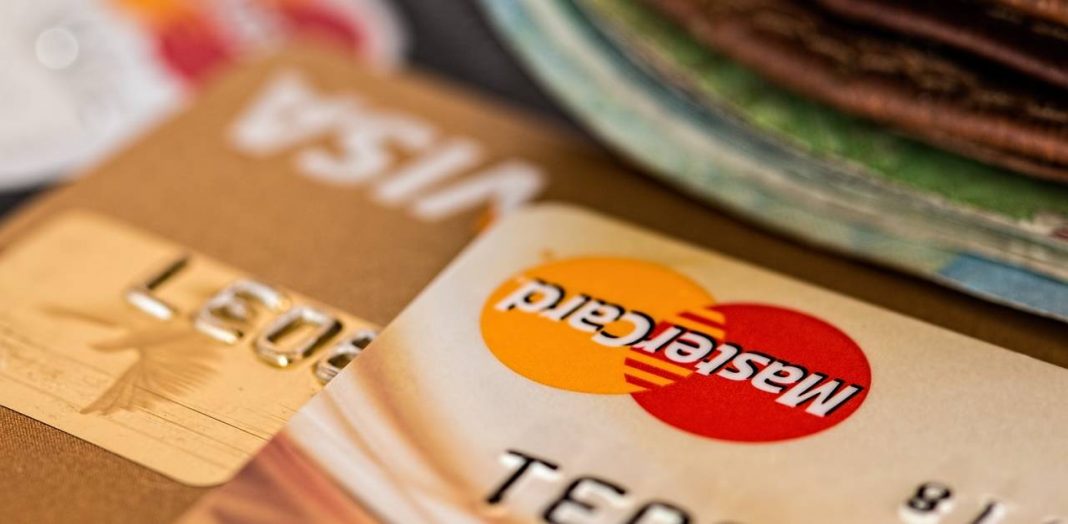UPDATED February 10, 2022 This piece has been updated to reflect the emergence of new technology


Christian Mathews Security Writer
As we’re transitioning to an online world where more and more transactions are taking place over the internet, the risk of data theft is increasing. Companies are spending millions on safeguarding their platforms from hackers. Just as it is important for companies to adopt best practices, the onus also lies on you to know how to protect from identity theft.
In this article, we will cover that and more.
1What is Financial Identity Theft?
The Department of Justice defines identity theft as all those types of crimes where a person wrongfully obtains and uses someone else’s personal data. The motive can be for economic gain, personal harm, or any other purposes.
Financial identity theft is the most common type of identity theft. In this type, hackers target your financial credentials and records. These include your bank login details, passwords, and so on. With this, they try to manipulate your bank transactions and withdraw money.
The deception is such that you won’t even know if you’re subject to identity theft. Hence, you’ll willingly provide them with the information they need. That’s one of the reasons data breaches are so hard to end. It’s not only about technological advances. It’s also about advancing consumer knowledge and responsibility.
2Different Types of Identity Theft
Financial identity theft is not the only type of identity theft. Identity thefts can be categorized in different ways.
Firstly, there are online and offline identity thefts. If a hacker targets you via an online medium, then it’s online identity theft. Email phishing attacks and DNS spoofing are some examples. If the hacker uses an offline medium for gathering your sensitive data, it’s offline identity theft. Either way, it is important to know how to protect from identity theft.
Depending on the sector, identity thefts can be divided into the following types:
Financial Identity Theft
This is the most common type of identity theft, where hackers target your financial details to access your bank accounts and financial assets.
Medical Identity Theft
In this type, the fraudsters obtain sensitive medical data and use it to procure medical services and equipment for themselves.
Tax Identity Theft
Here fraudsters obtain your personal information to file a tax return and get a refund. This refund should have been credited to your account.
Employment Identity Theft
If it’s employment-based identity theft. Here, fraudsters misuse your personal information for passing a background check or landing a job for themselves. Knowing what comes up on a background check, will also put you in a better position to prevent this type of identity theft.
Criminal Identity Theft
Every type of identity theft is actually criminal. But if the fraudster supplies your personal information to the law enforcement agencies to get away with the wrongdoings, it’ll be categorized as criminal identity theft.
Similarly, there are other types like synthetic identity theft, senior identity theft, child identity theft, and so on.
3How to Recognize Identity Theft
The first part in knowing how to protect from identity theft, is how to know if someone stole your identity. As per Javelin Research estimates, some 14.4 million Americans experienced some form of identity theft in 2018. Early detection of fraudulent activities is the best way to save yourself from damage. Here are some early warning signs for identity theft:
- You’re receiving calls about accounts you never opened. If an agency has your name, phone number, email ID, then chances are they’ve gathered your personal details by some form of fraudulent activities. If you’re getting calls from a debt collector, then it’s a sure sign of financial identity theft.
- Your credit reports show transactions you have no idea about. Fraudsters often carry out transactions in your name. Therefore, they get billed to you. Also, look for mysterious business inquiries on your credit report.
- You were surprisingly denied a loan or credit card application. Fraudsters can open additional accounts in your name, which will impact your credit score. Thus, you will be denied loan and credit services.
- You were denied for legitimate medical claims. Bad actors can overuse your health benefit plans, which will force your medical provider to deny your claims.
- You’re no longer receiving credit card bills. Thieves, after obtaining your credentials, change the address so that you no longer receive your bank bills.
These are just some of the ways you can be sure that your data has been breached. You should get in touch with your bank and law enforcement agencies at the earliest.
4Ways to Protect Yourself From Financial Identity Theft
As a financial product user, it’s partly your responsibility to keep your identity safe. So if you’re wondering how to safeguard your sensitive data, here are some ways to do it:
Never Respond To Unknown Emails
Emails are one of the essential communication tools, but they are also used for deceiving purposes. Whenever you receive an email from an unknown sender, you should seldom reply to it, especially your personal information. The best way is to report the mail if it looks malicious or demands your personal data to further process something. You might also want to know how do you stop spam emails. That will ensure the changes of these emails landing in your inbox.
Never Disclose Your Social Security Number
Your Social Security Number is linked with most services you use in your daily life. Therefore, if it falls into the wrong hands, all those services will be compromised. Other countries have similar identification numbers. You must keep this number safe. Even the government agencies will not ask for your SSN.
Beware Of Spoof Websites
Spoof websites are exact clones of real websites. They are set up to deceive users into entering their personal information. Because of the similarity, it’s almost impossible to differentiate between the two. So you need to double-check that you’ve landed on the correct website and not a duplicate one. There are some well known apps that may have security flaws and have raised the question as to how safe is Cash App or PayPal and the likes.
Destroy Paper Records And Statements
Banks and ATMs provide you with paper statements after a successful transaction. You should always destroy them after reviewing. You should also request for e-statements that are delivered to your registered email.
Always Monitor Credit Report
Credit reports contain all the transactions that you’ve done over time. Therefore, you should review it regularly to check for explainable transactions.
Carefully Use Public Wi-Fi
Public Wi-Fis can be compromised. Therefore, if you send and receive personal data, there’s a risk of it being stolen. It is best not to use public Wi-Fi for sensitive transactions.
Keep Updating Passwords Regularly
Finally, you should always update your passwords regularly. Bi-weekly or monthly is a good frequency. Always create a strong password that’s difficult to crack. Make sure to regularly backup all passwords and important documents on a secure external hard drive.
By safeguarding your personal data, you’re staying on the right side. Always bear this responsibility of keeping data safe with the points mentioned above. By following them, you are steps ahead of many in knowing how to protect from identity theft.
The next step is know what to do if your identity is stolen.
















































